The first photos from the Euclid mission are out — and they’re a sign that not only could the craft uncover the fingerprints of dark energy and dark matter in the universe, but it will provide some stunning cosmic vistas along the way.
The mission was launched by the European Space Agency on July 1 of this year, spending a month migrating to Lagrange point 2, a gravitationally stable point “behind Earth as viewed from the Sun,” about a million miles past Earth and where the James Webb Space Telescope (JWST) also resides.
The mission, according to Euclid project scientist René Laureijs, can be seen as similar to ESA’s Gaia mission, which is mapping the Milky Way and its stars and satellite galaxies. But Euclid is taking an even more expansive view, peering as far back as 10 billion years ago to some of the earliest galaxies in the universe to create a map of the distribution of matter. That, in turn, could help determine the nature of the invisible, nearly undetectable material that clumps galaxies together — dark matter, which doesn’t interact with normal matter except through gravitation — or of the pervasive force that’s causing the universe to expand , known as dark energy. The two together account for 95 percent of the universe — with normal, everyday matter making up the rest.
“What we are going to do is to observe the universe down to 10 billion years ago, look back in time,” Laureijs says. “Then we will see how the universe has evolved from 10 billion years ago until now, and this will tell us how the universe has expanded.”
Laureijs guided Astronomy through the first batch of Euclid images (see earlier test Euclid images here), and how, even before the real data gathering has begun, they can tell us plenty about the “dark universe.”
The Perseus Cluster
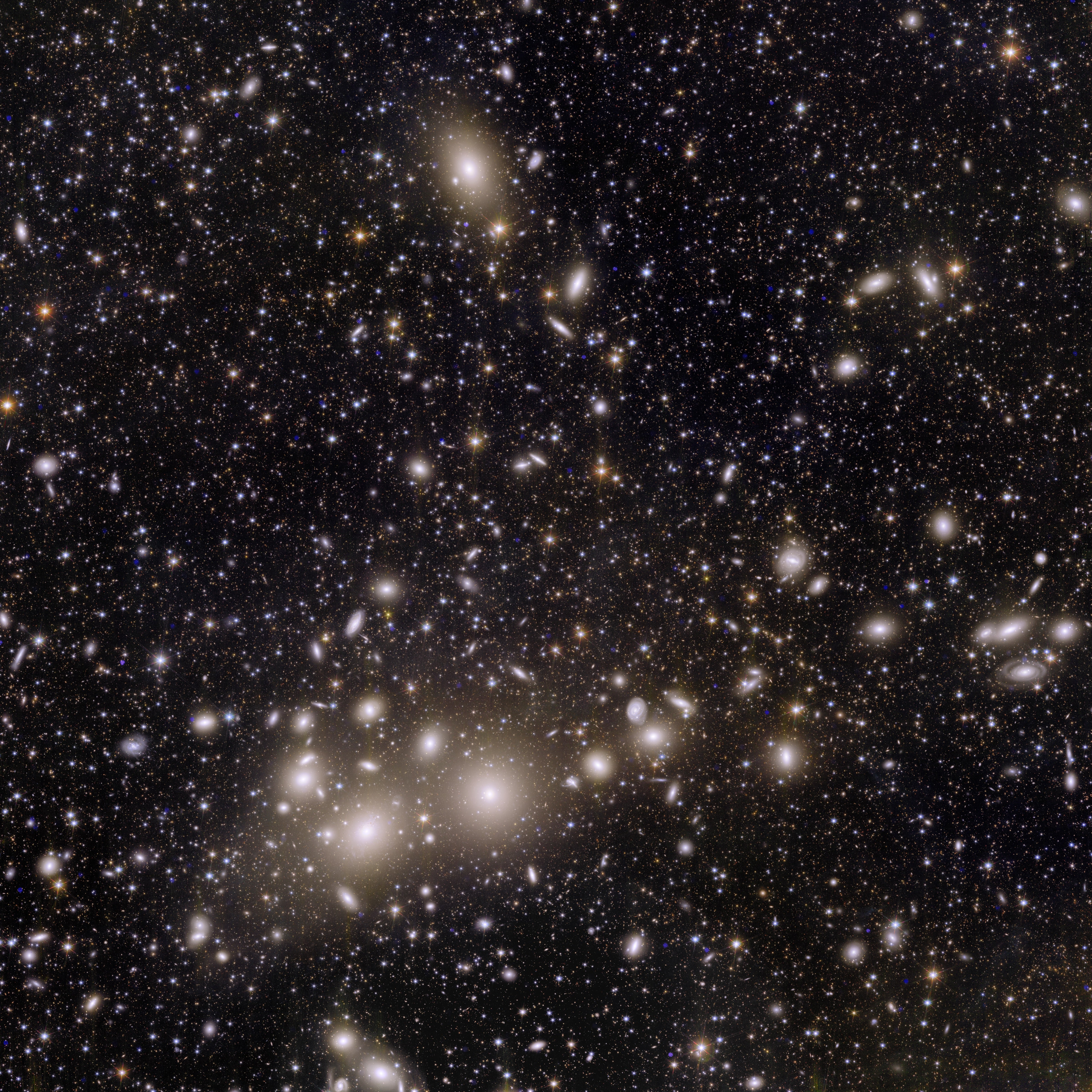
Euclid image of the Perseus Cluster. Credit: European Space Agency
Galaxies tend to gravitationally gather together in the same way stars cluster in galaxies, but on a much wider scale. The Milky Way, for instance, is part of the Virgo Supercluster, a 110-million-light-year-diameter grouping of galaxies. But 240 million light-years away sits the majestic Perseus Cluster, an impressive assemblage of more than 1,000 galaxies.
Along with the view of the cluster itself comes 100,000 background objects, which include some of the most distant galaxies Euclid can see.
“If you look very carefully you see these red specks in the background,” Laureijs says. “And these are the really, very distant galaxies. The Perseus Cluster is only one cluster.”
Light from objects that are receding shifts toward the red end of the visible spectrum, and can even shift out of the visible range altogether. (Euclid sees in visible and near-infrared light.) That recession is caused by the expansion of the universe, which in turn is boosted by dark energy.
The Horsehead Nebula
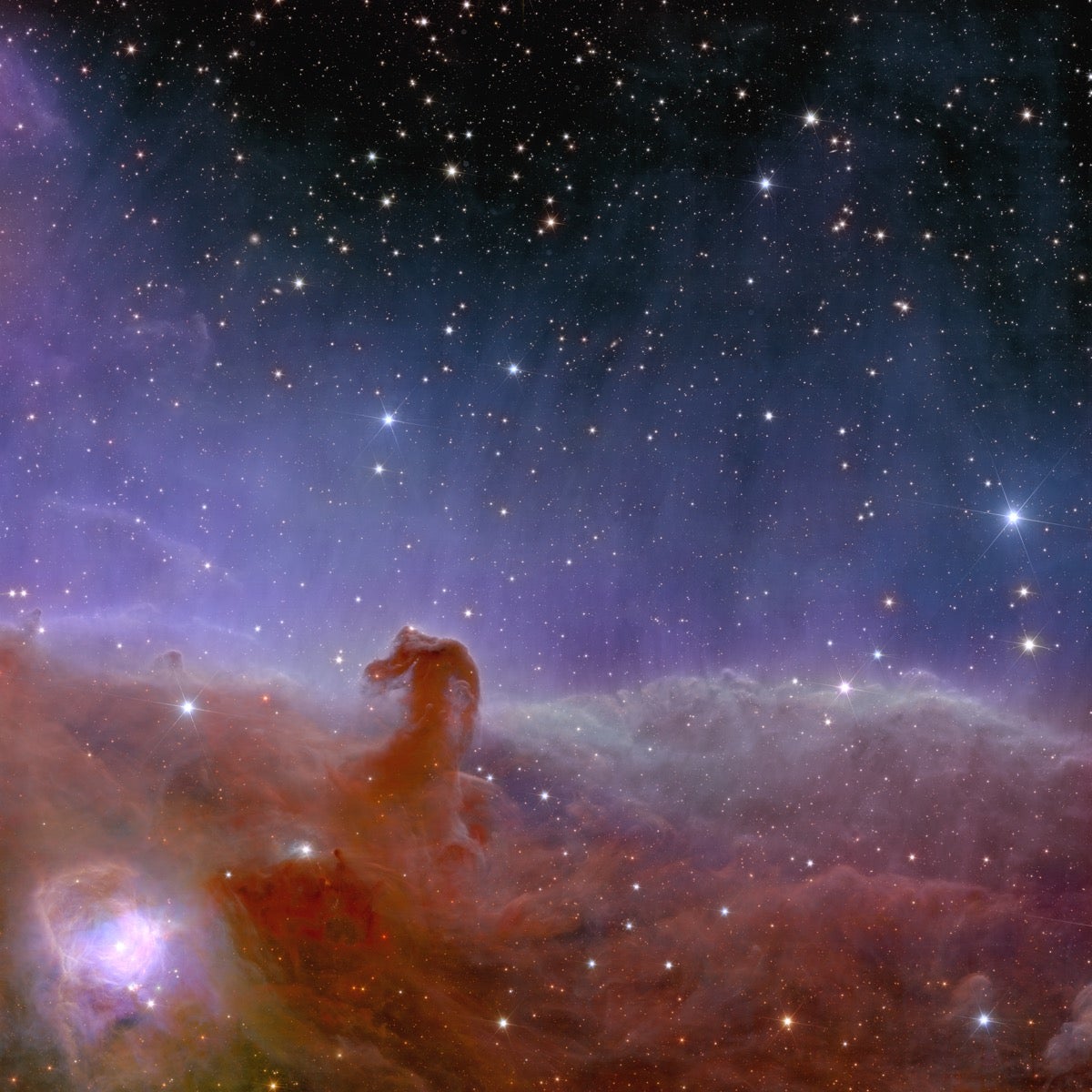
Euclid image of the Horsehead Nebula. Credit: European Space Agency
The Horsehead Nebula requires little, if any, introduction. After all, it’s an iconic target for backyard astrophotographers and space telescopes alike. The Euclid team isn’t just looking at the rapid star formation occurring in the nebula. It’s also looking for rogue planets that either formed on their own or were ejected by their home stars.
“It’s a familiar and beautiful nebula but it’s also a star-forming region, and what the researchers are doing now is looking for free-flying Jupiter-type objects, so very low-mass objects that come together with the stars that are formed in Orion,” he says. (The Horsehead Nebula is part of the Orion molecular cloud complex.) “Now, very little is known about these objects and the idea is to measure them with Euclid.”
We could learn not just about these objects, but about how stars fall into certain mass ranges, informing us more about how the Sun formed and why it’s the mass it is.
IC 342 and NGC 6822
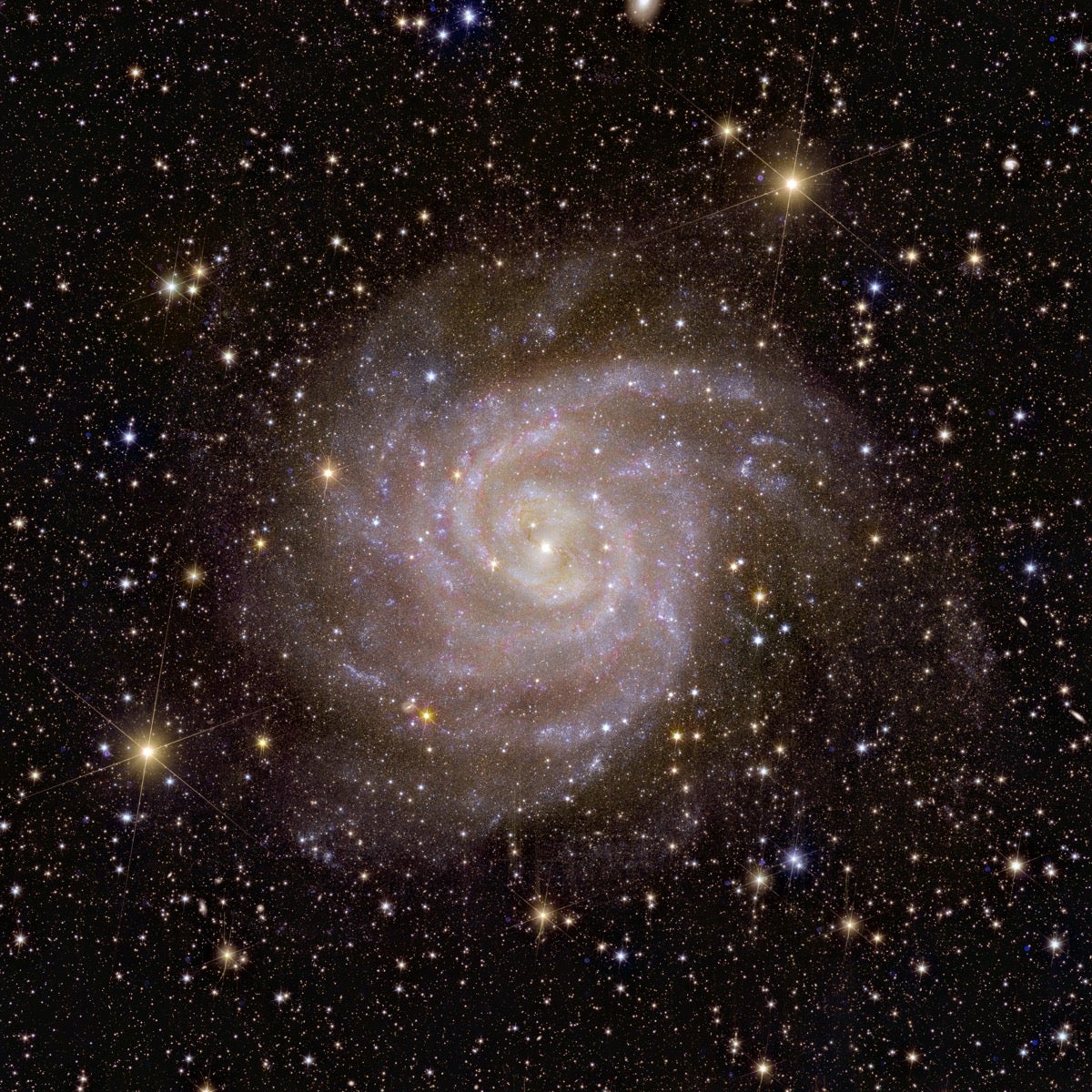
IC 342. Credit: European Space Agency
IC 342 (above) is a spiral galaxy not unlike the Milky Way, located nearly 11 million light-years away. The galaxy, though, is difficult to see, as it sits on the other side of the dusty plane of our galaxy. NGC 6822 (below) is a much smaller irregular galaxy 1.6 million light years away, similar to the Small Magellanic Cloud in structure. Euclid is trying to gauge stellar populations of these nearby galaxies, especially fainter stars other telescopes can’t easily pick up.
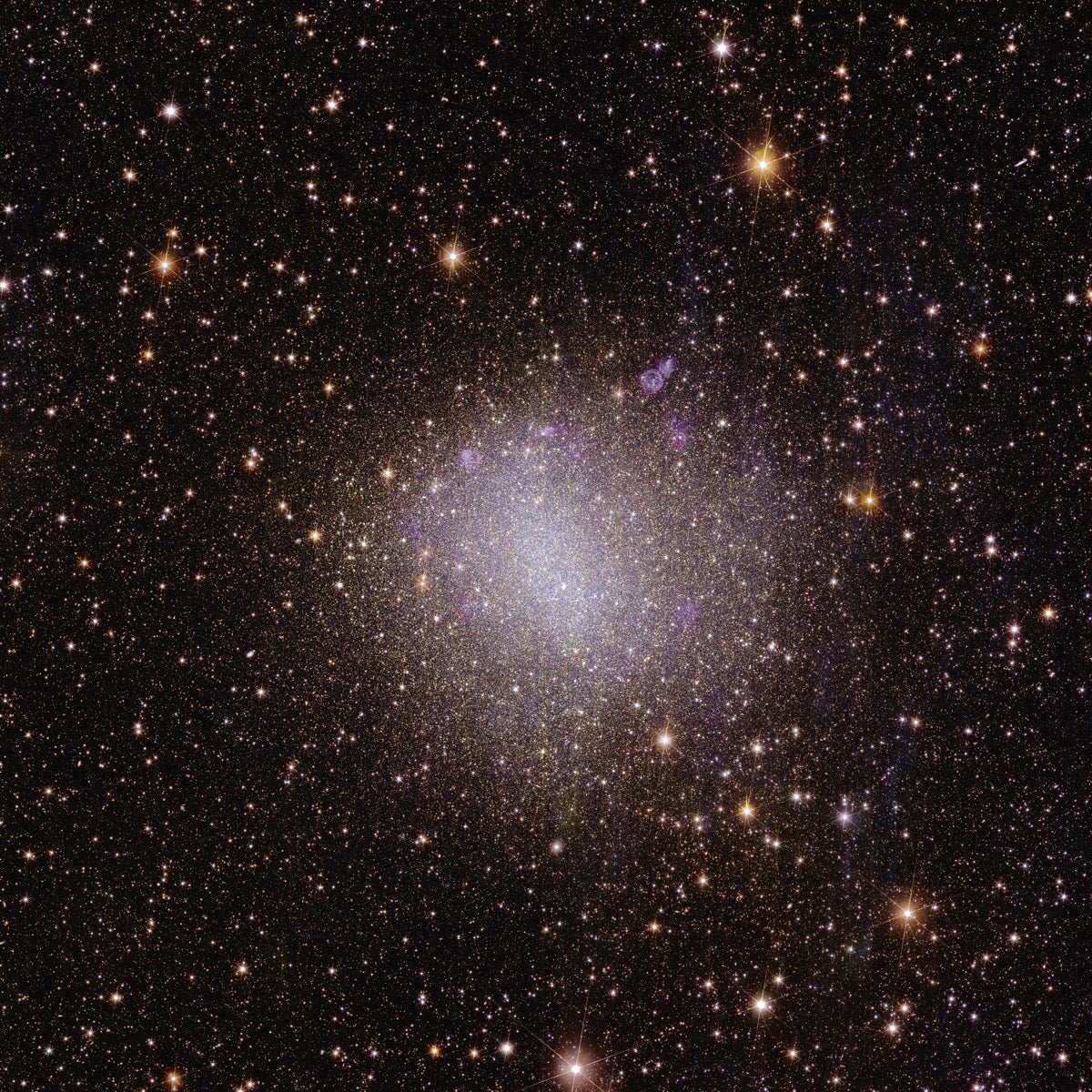
Euclid will also look at how the presence of dark matter influences both galaxies.
NGC 6397
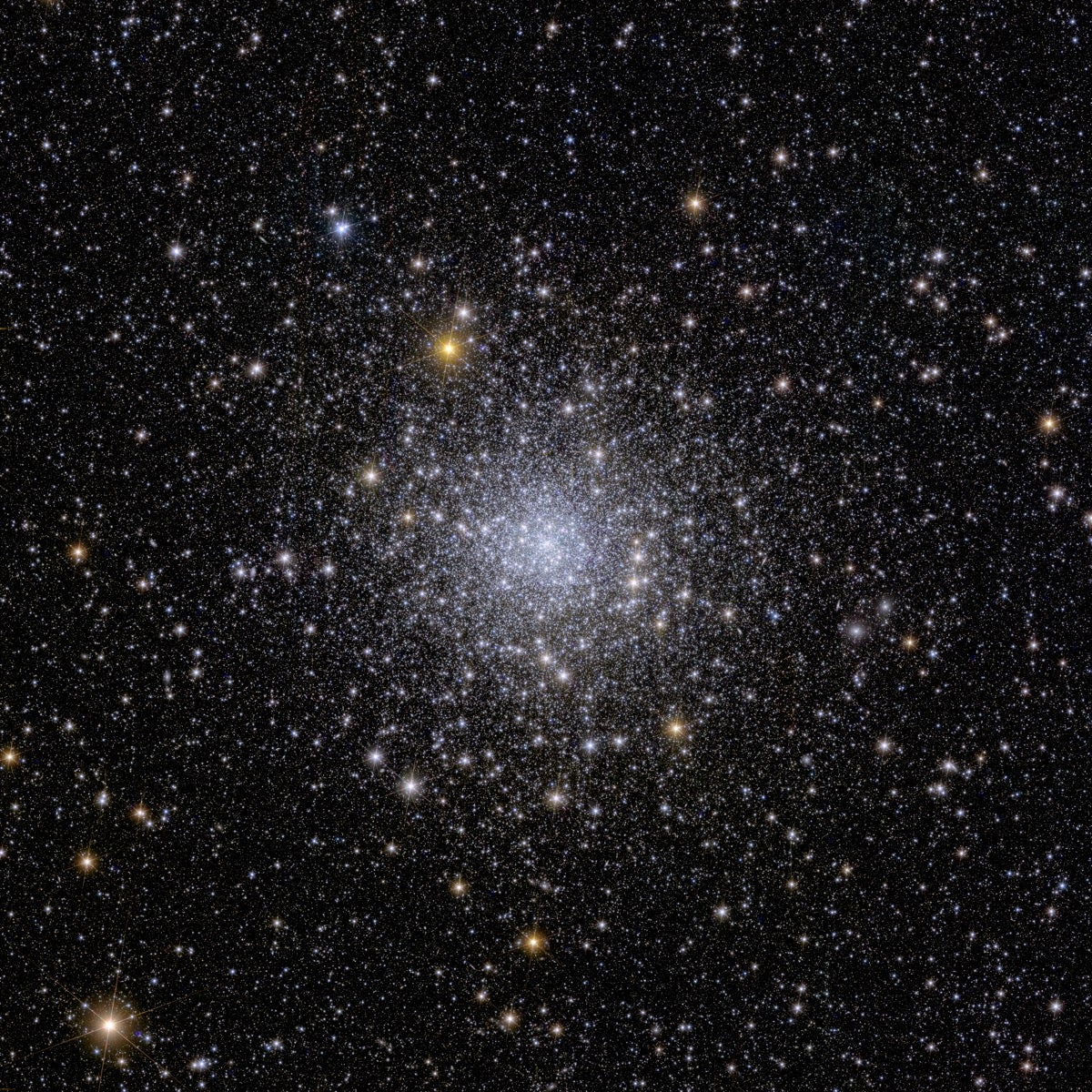
NGC 6397. Credit: European Space Agency
NGC 6397 is a globular cluster — an ancient assemblage of thousands of stars gravitationally held together. Euclid can observe globular clusters in a way that allows censuses of the stars in these systems, while also taking in a wider view than telescopes like Hubble or JWST, which can only take narrower shots.
NGC 6822. Credit: European Space Agency
It’s also trying to determine why IC 342 has active star formation, but NGC 6822 has a much slower rate of new star births.
“Euclid look looks in the infrared, so it looks at stars which are much cooler than if you observe it in the optical,” Laureijs says. “So what we can do is make a census of the older, coolest stars In both galaxies.” These older stars will tell us more about what material was present when they formed.
Globular clusters were some of the first objects to form in our galaxy, Laureijs says. “The idea of the study is to see how the global clusters move in our galaxy and that if there is a drag on these globular clusters that form tidal tails.” These are long stretches of stars that form due to gravitational interactions, such as between the cluster and the larger galaxy.
So far, no tidal tails have been detected. Laureijs says this could be because of dark matter. “Globular clusters may have more mass than we expect because it has a halo of dark matter, and this matter protects the global cluster from fragmenting,” he says. Thus, no tidal tails.
The future of Euclid
Euclid is just getting started. It will spend six years taking in enormous views of the entire sky and, like Gaia, assemble petabytes of data into several releases for astronomers to sift through. In the process, we hope to learn more about dark matter and dark energy, two of the biggest astronomical mysteries.
But who knows? Maybe it will also uncover some brand-new mysteries along the way.
Editor’s note: A previous version of this article incorrectly stated that dark energy and dark matter accounted for 95 percent of the mass of the universe.